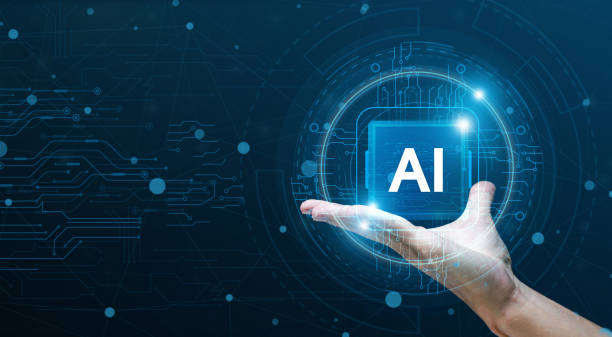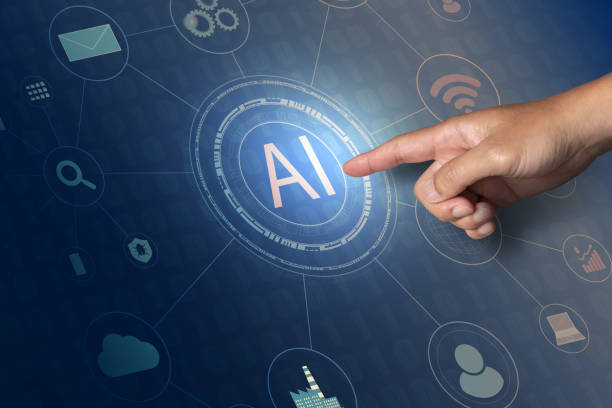What is an Artificial Intelligence Robot and What are its Applications?
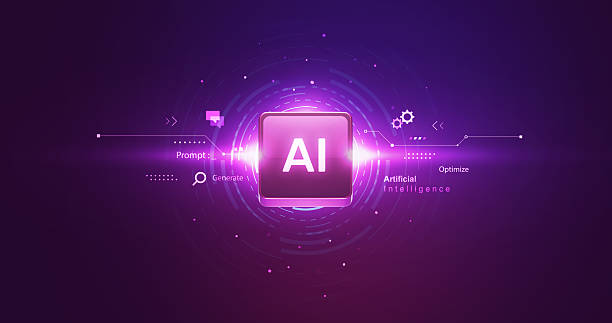
#Artificial Intelligence Robot (AI Robot) is a combination of two key concepts: artificial intelligence and robotics.
In simple terms, it is a robot that, using artificial intelligence algorithms, is capable of performing tasks that usually require human intelligence.
These tasks can include learning, problem-solving, decision-making, pattern recognition, and interaction with the environment.
These robots go beyond executing pre-determined instructions and can change and improve their behavior based on their data and experiences.
To better understand the AI robot, we must first become familiar with the two basic concepts of artificial intelligence (Wikipedia Artificial Intelligence) and robotics.
The applications of AI robots are very extensive and have affected almost every industry.
In the manufacturing industry, these robots are used for process automation, increased productivity, and error reduction.
In healthcare, surgical robots, nurse robots, and rehabilitation robots assist doctors and patients.
In the customer service industry, chatbot robots and virtual assistants answer customer questions and solve their problems.
In education, educational robots help students learn complex concepts.
Even in everyday life, home robots such as robotic vacuum cleaners and gardening robots perform repetitive and tedious tasks.
In short, an AI robot is a powerful tool that can help improve the quality of life and increase productivity in various fields.
An AI robot with decision-making power can perform many tasks instead of human labor.
Are you losing potential customers due to an unprofessional website? Rasaweb is your answer! With our specialized corporate website design services:
✅ Enhance the credibility and status of your business
✅ Experience attracting more targeted customers
⚡ Act now to receive a free consultation!
The Main Components of an Artificial Intelligence Robot
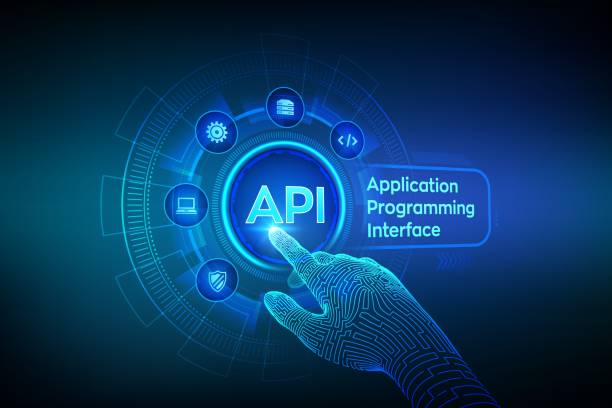
An AI robot consists of several main components, each of which plays an important role in its overall performance.
These components include:
- Hardware The robot’s hardware includes mechanical parts such as arms, wheels, sensors, and actuators.
These parts enable the robot to move, interact with the environment, and collect information. - Software The robot’s software includes artificial intelligence algorithms, control programs, and the operating system.
This software allows the robot to process data, learn, make decisions, and perform tasks. - Sensors Sensors are tools that collect information about the surrounding environment.
This information can include images, sounds, temperature, pressure, and position.
Sensors enable the robot to understand the environment and react appropriately to it. - Actuators Actuators are tools that the robot uses to interact with the environment.
These actuators can include motors, pumps, clamps, and speakers.
Actuators enable the robot to move, manipulate objects, and communicate with others. - Control System The robot’s control system is responsible for coordinating and controlling the performance of all robot components.
This system receives information from the sensors and processes it, sending the necessary commands to the actuators so that the robot can perform its tasks correctly.
These components working together enable an AI robot to perform various tasks automatically and intelligently.
An AI robot uses sensors to understand environmental information and makes decisions with complex algorithms.
Types of Artificial Intelligence Algorithms Used in Robots
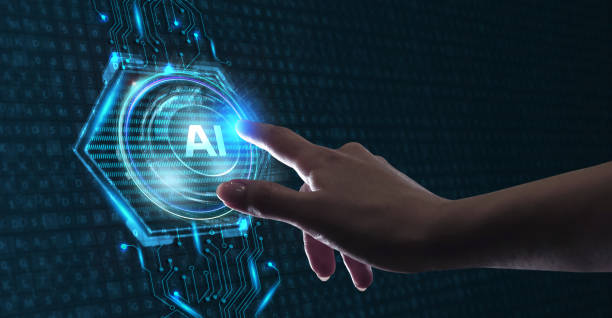
Artificial intelligence algorithms play a key role in the performance of smart robots.
These algorithms allow robots to learn, make decisions, and interact with the environment.
Some of the most common artificial intelligence algorithms used in robots include:
- Machine Learning Machine learning allows robots to learn from data without explicit programming.
By analyzing data, these algorithms identify patterns and relationships in the data and, based on them, build predictive and decision-making models. - Neural Networks Neural networks are computational models inspired by the structure of the human brain.
These networks consist of a large number of interconnected nodes, each simulating a neuron.
Neural networks are very suitable for solving complex problems such as image recognition, natural language processing, and robot control. - Fuzzy Logic Fuzzy logic is a reasoning method that allows robots to work with incomplete and uncertain information.
This method allows robots to make decisions based on a degree of truth and falsehood, not just right or wrong. - Optimization Algorithms Optimization algorithms help robots find the best solution to a problem.
By searching the problem-solving space, these algorithms find solutions that have the highest efficiency or the lowest cost.
These algorithms, with appropriate combination and adjustment, can enable robots to perform complex tasks such as independent navigation, object recognition, path planning, and interaction with humans.
AI robots strongly need machine learning algorithms to solve complex problems.
| Algorithm | Application |
|---|---|
| Machine Learning | Pattern Recognition, Prediction |
| Neural Networks | Image Processing, Language Processing |
| Fuzzy Logic | Control of Complex Systems |
| Optimization Algorithms | Path Optimization, Planning |
The Role of Sensors and Actuators in the Performance of an AI Robot
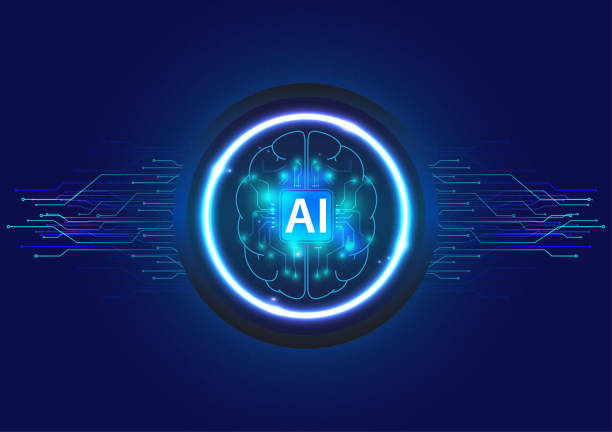
Sensors and actuators are two vital components in the structure of an AI robot that enable the robot to interact with the surrounding environment.
Sensors allow the robot to collect information about the environment, while actuators allow the robot to affect the environment.
Sensors play the role of the robot’s eyes and ears.
They collect information such as distance, light, sound, temperature, pressure, and position.
This information allows the robot to understand what is happening around it and, based on that, make appropriate decisions.
Different types of sensors are used in robots, including cameras, microphones, tactile sensors, proximity sensors, and inertial sensors.
An AI robot uses sensors to understand its surrounding environment.
Actuators play the role of the robot’s hands and feet.
They allow the robot to move, manipulate objects, and interact with the environment.
Different types of actuators are used in robots, including motors, pumps, clamps, and speakers.
For example, a surgical robot uses precise actuators to perform surgical operations, while a production robot uses powerful actuators to move heavy parts.
The appropriate combination of sensors and actuators allows the AI robot to perform various tasks automatically and intelligently.
An AI robot is unable to do anything without sensors and actuators.
Are you disappointed with the low conversion rate of your online store? Rasaweb turns your online store into a powerful tool for attracting and converting customers!
✅ Significant increase in visitor-to-buyer conversion rate
✅ Exceptional user experience to increase customer satisfaction and loyalty⚡ Get a free consultation from Rasaweb!
Challenges and Limitations of AI Robots

Despite significant advances in robotics and artificial intelligence, AI robots still face numerous challenges and limitations.
Some of these challenges include:
- Complexity Designing and building AI robots is very complex and requires expertise in various fields such as mechanical engineering, electrical engineering, computer science, and artificial intelligence.
- Cost Building AI robots can be very expensive, especially if advanced sensors and actuators are needed.
- Security AI robots can be vulnerable to cyberattacks and hacking.
This can lead to information theft, equipment damage, and even harm to humans. - Ethics The use of AI robots in some areas, such as war and surveillance, can raise serious ethical issues.
- Reliability AI robots may not function correctly in unexpected situations or when faced with new information.
This can lead to errors and unfortunate incidents.
Despite these challenges, researchers and engineers are constantly working to improve the performance and reliability of AI robots.
AI robots need improvement to function correctly in various situations.
The Future of AI Robots and Their Impact on Human Life

The future of AI robots looks very bright.
With the increasing advances in artificial intelligence and robotics, robots are expected to play a more prominent role in various areas of human life.
AI robots can transform human life.
In the future, robots can help humans in tasks that are dangerous or difficult for humans, such as space exploration, rescue operations, and complex surgeries.
Also, robots can work in jobs that are repetitive and tedious, such as production, packaging, and transportation, instead of humans.
This can lead to increased productivity and reduced costs.
In addition, robots can also play an important role in people’s daily lives.
Home robots can help with household chores, educational robots can help students learn, and care robots can take care of the elderly and sick.
AI robots will play a very important role in human life in the future.
However, the widespread use of AI robots can also create challenges.
One of the most important of these challenges is the impact of robots on the labor market.
With humans being replaced by robots in some jobs, the unemployment rate may increase.
To address this challenge, it is necessary to provide appropriate training and empowerment programs for workers so that they can learn new skills and be employed in new jobs.
How to Build an AI Robot?

Building an AI robot is a complex project that requires knowledge and skills in various fields.
However, with the right tools and resources, even beginners can build simple robots.
The main steps to building an AI robot are:
- Define the Goal Before starting to build the robot, you must define your goal.
What do you want your robot to do? What tasks should it perform? - Select Hardware Based on your goal, you must select the appropriate hardware.
This hardware can include mechanical parts, sensors, actuators, and a microcontroller. - Select Software To control the robot and implement artificial intelligence algorithms, you need the appropriate software.
This software can include an operating system, a programming language, and artificial intelligence libraries. - Design and Build the Body The robot’s body should be designed to protect the internal parts and allow the robot to move and interact with the environment.
- Programming After selecting the hardware and software, you should start programming the robot.
This programming includes writing code to control motors, reading information from sensors, and implementing artificial intelligence algorithms. - Testing and Optimization After completing the programming, you should test your robot and optimize its performance.
This testing and optimization includes adjusting algorithm parameters, calibrating sensors, and fixing code bugs.
Many resources are available to learn how to build an AI robot, including books, online tutorials, and online forums.
AI robots are an attractive and challenging project.
| Stage | Description |
|---|---|
| Define the Goal | Specify what the robot should do. |
| Select Hardware | Select mechanical parts, sensors, and … |
| Select Software | Select the operating system and programming language. |
| Design and Build the Body | Build the body to protect the parts. |
| Programming | Write code to control the robot. |
| Testing and Optimization | Test the robot and fix bugs. |
Will AI Robots Replace Humans?

This is a question that has occupied the minds of many people.
With the increasing advances in artificial intelligence and robotics, will robots eventually replace humans in various jobs? AI robots can change the future of humans.
The answer to this question is complex and depends on various factors.
On the one hand, robots can perform better, faster, and more accurately than humans in many tasks.
They can work in harsh and dangerous conditions, without the need for rest and without the possibility of fatigue.
This can lead to increased productivity and reduced costs.
On the other hand, humans have skills and abilities that robots are not yet able to imitate.
These skills include creativity, critical thinking, empathy, and the ability to build social connections.
Also, humans can make better decisions in unexpected situations and when faced with new information.
It seems that in the future, robots and humans will work together.
Robots will perform repetitive and tedious tasks, while humans will focus on tasks that require creativity, critical thinking, and empathy.
AI robots alongside humans can increase efficiency.
For this collaboration to be effective, workers need to learn new skills and adapt to the new conditions of the labor market.
Also, governments and companies should provide appropriate training and empowerment programs for workers.
Don’t have a corporate website yet and are missing out on online opportunities? With professional corporate website design by Rasaweb,
✅ Double the credibility of your business
✅ Attract new customers
⚡ Free consultation for your corporate website!
AI Robots and Privacy
![]()
The use of AI robots, especially in homes and public spaces, has raised concerns about privacy.
Robots equipped with cameras, microphones, and other sensors can collect a lot of information about their surroundings and the people they interact with.
AI robots can collect people’s personal information.
This information can include images, sounds, location data, and behavioral patterns.
This information can be used by robot manufacturers, advertising companies, and even hackers.
For example, the information collected by a robotic vacuum cleaner can be used to target advertising to users.
The information collected by a nurse robot can be used to monitor the behavior of the elderly and sick.
AI robots can be used for targeted advertising.
To protect privacy against the threats posed by AI robots, the following measures must be taken:
- Transparency Robot manufacturers should transparently inform about how their robots collect, use, and share information.
- Control Users should have complete control over the information collected by their robots.
They should be able to delete information, restrict access to information, and prevent the collection of unnecessary information. - Security Robots should be designed to be resistant to cyberattacks and protect the information collected.
- Regulation Governments should enact laws and regulations to regulate the use of AI robots and protect the privacy of individuals against the threats posed by this technology.
By following these measures, the benefits of AI robots can be enjoyed without endangering the privacy of individuals.
AI robots should be designed in a way that does not violate people’s privacy.
Ethical Considerations in the Design and Use of AI Robots

Simultaneous with technological advances in robotics and artificial intelligence, attention to ethical considerations related to the design, construction, and use of these robots has become increasingly important.
AI robots should be designed and used in compliance with ethical principles.
Some of the most important ethical considerations in this area include:
- Accountability Who is responsible for the performance of robots? If a robot causes harm to humans, who should be held accountable?
- Transparency How do robots make decisions? How do their algorithms work? Can users understand how robots work?
- Justice Do robots treat everyone fairly? Do they prevent discrimination?
- Privacy What information do robots collect? How do they use this information? Is the privacy of individuals protected?
- Independence Should robots make decisions independently of humans? What limitations should there be on their independence?
To answer these questions, it is necessary for experts from various fields, including engineers, computer scientists, philosophers, and lawyers, to work together and develop ethical principles and appropriate standards for the design and use of AI robots.
AI robots should be designed in a way that considers the interests of society.
Also, it is necessary to increase public awareness about the ethical issues related to AI robots and encourage people to discuss these issues.
AI robots should be designed in a way that respects human rights and values.
FAQ
| Question | Answer |
|---|---|
| What is an AI Robot? | An Artificial Intelligence Robot (AI Robot) is a machine capable of understanding the environment, reasoning, learning, and making decisions to perform tasks independently. |
| What is the difference between regular robots and AI robots? | Regular robots perform repetitive tasks based on pre-programming, while AI robots can learn from experience, interact dynamically with the environment, and even behave in a way that resembles human intelligence. |
| What are the main applications of AI robots? | They are used in industries (manufacturing, assembly), medicine (surgery, diagnosis), services (customer support, domestic), exploration (space, underwater), and many other fields. |
| What technologies are used in the construction of AI robots? | Machine Learning, Computer Vision, Natural Language Processing, Deep Learning, and Robotics are among the key technologies. |
| Can AI robots have emotions? | Currently, robots do not have emotions in the human sense. They can identify and react to emotions, but they do not experience emotions themselves. |
| What are the main challenges in developing AI robots? | Safety, reliability, ethics, autonomy, adaptability to complex environments, and natural interaction with humans are important challenges. |
| How are AI robots trained? | They are usually trained using large volumes of data, machine learning algorithms, and deep learning to identify patterns and make decisions. |
| Examples of AI robots in daily life? | Intelligent robotic vacuum cleaners, customer support chatbots, self-driving cars, and surgical robots in hospitals. |
| Are AI robots a threat to human jobs? | Some repetitive jobs may be automated, but at the same time, robots can increase productivity and create new jobs in the development, maintenance, and monitoring of these systems. |
| How is the future of AI robots predicted? | They are expected to become more intelligent, autonomous, and capable of performing more complex tasks, and to be in closer interaction with humans in various environments. |
And other services of Rasa Web Advertising Agency in the field of advertising
Smart Website Development: A professional solution for attracting customers with a focus on using real data.
Smart Website Development: An effective tool for online growth with the help of marketing automation.
Smart Content Strategy: A professional solution for digital branding with a focus on customizing the user experience.
Smart Marketing Automation: A combination of creativity and technology to attract customers by optimizing key pages.
Smart Custom Software: Transform user interaction with accurate audience targeting.
And more than hundreds of other services in the field of internet advertising, advertising consulting, and organizational solutions
Internet Advertising | Advertising Strategy | Advertisement Report
Resources
What are the applications of artificial intelligence robots?
,Everything about smart robots; from definition to applications and benefits
,Will robots change the world?
,What is the difference between robotics and artificial intelligence?
? Are you ready to transform your business in the digital world? At Rasa Web Digital Marketing Agency, we, with our expertise in user-friendly website design and the implementation of comprehensive digital strategies, help you have a powerful and effective presence in the online space. From SEO and online advertising to social media management, we are your digital partner to achieve your goals.
📍 Tehran, Mirdamad Street, next to the Central Bank, Kazerun South Alley, Ramin Alley No. 6

